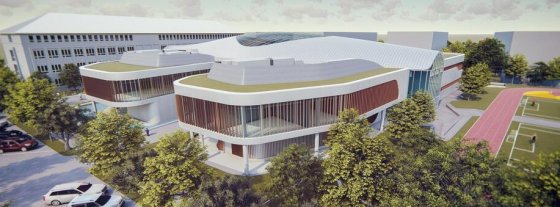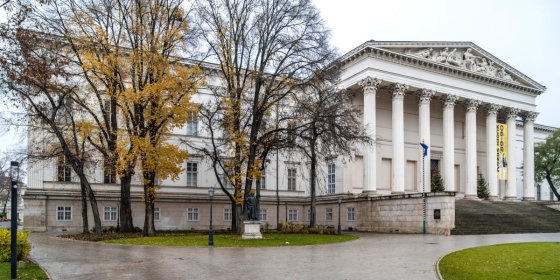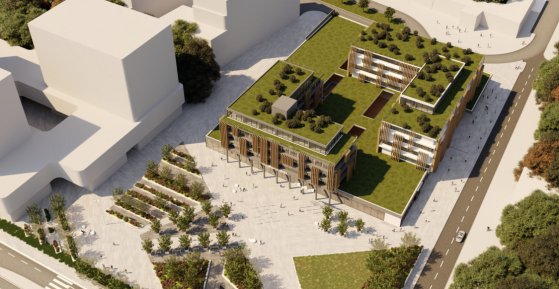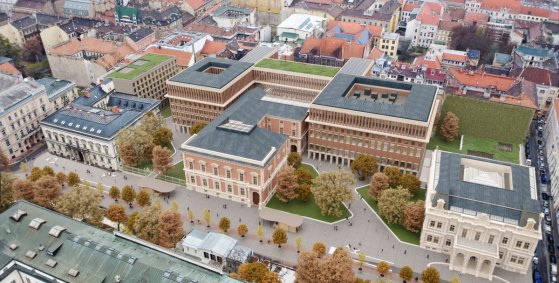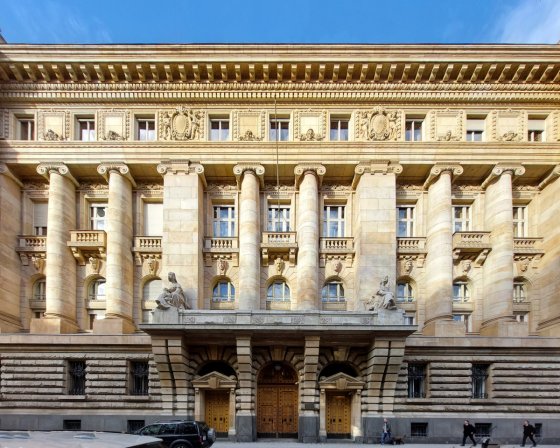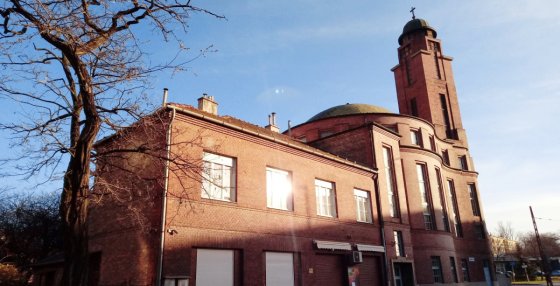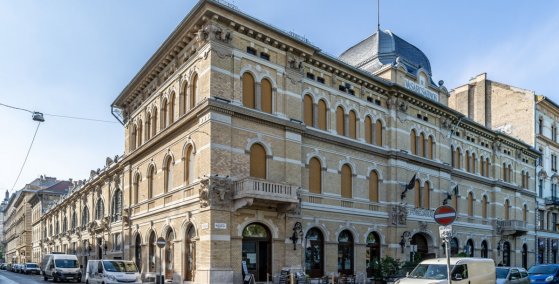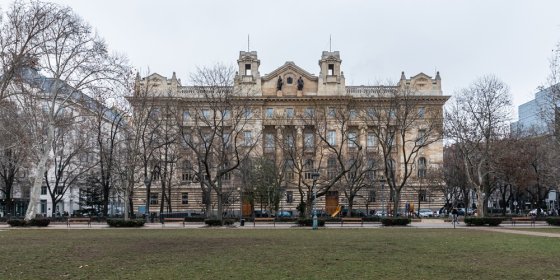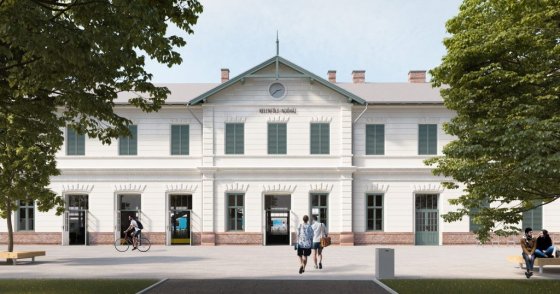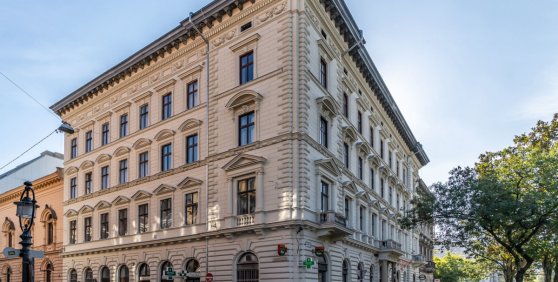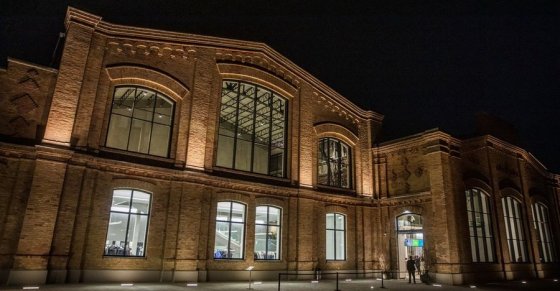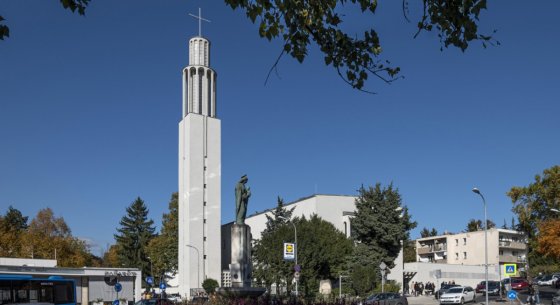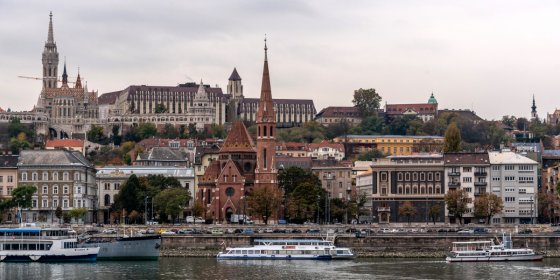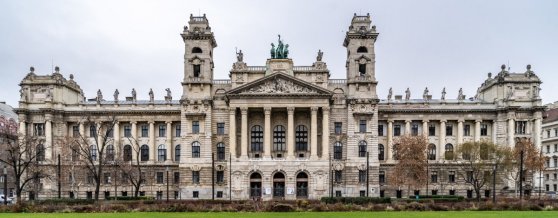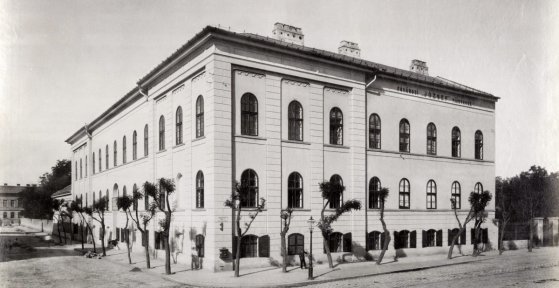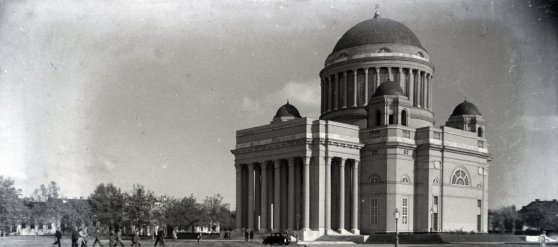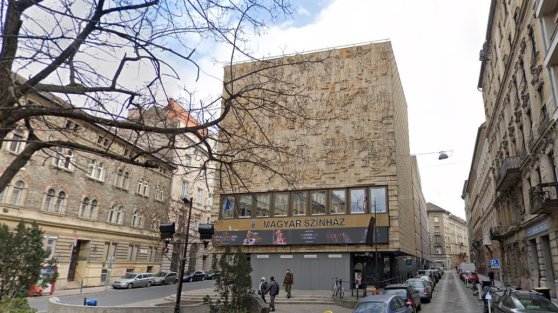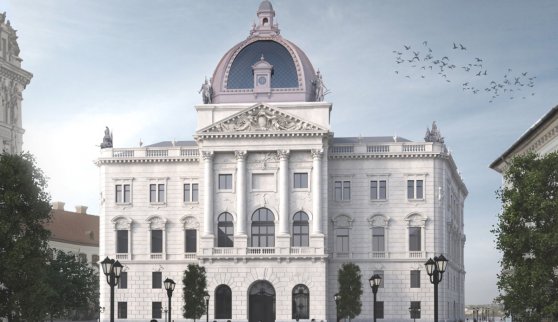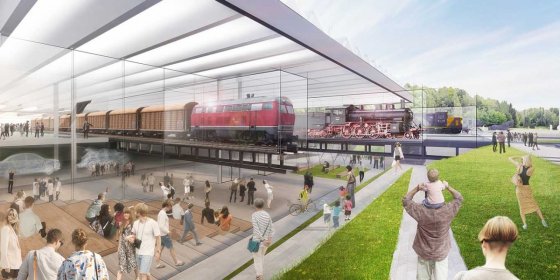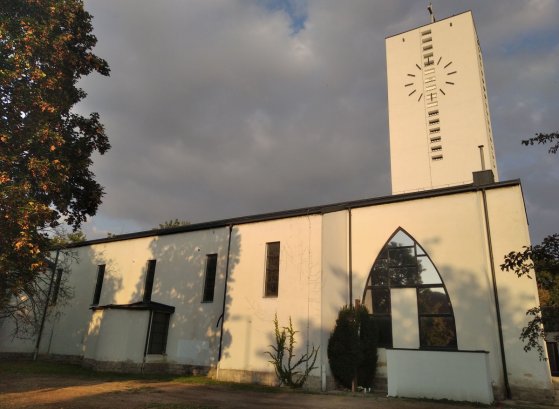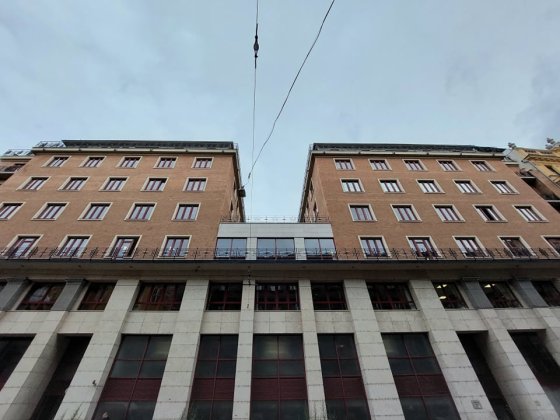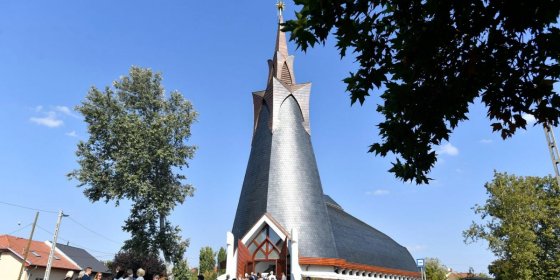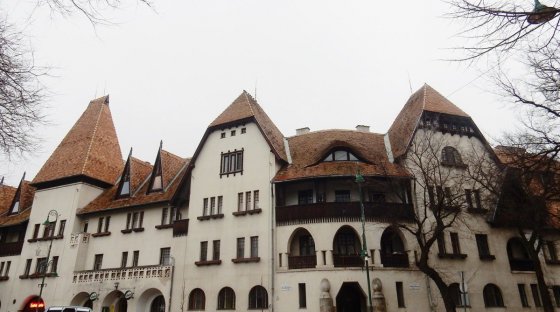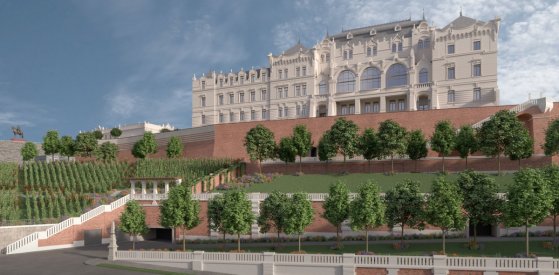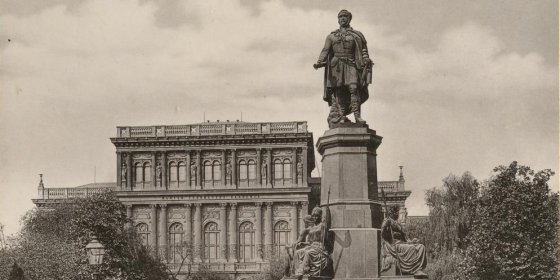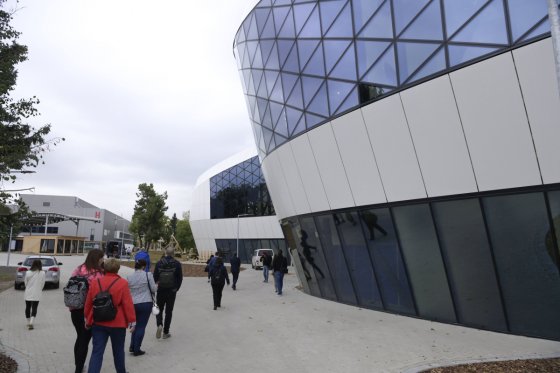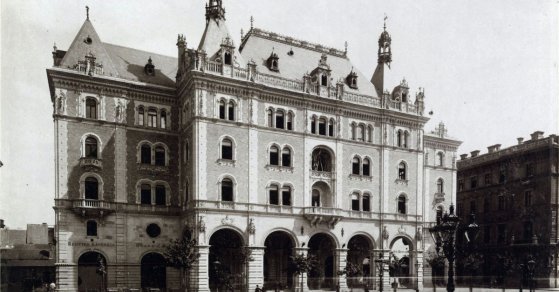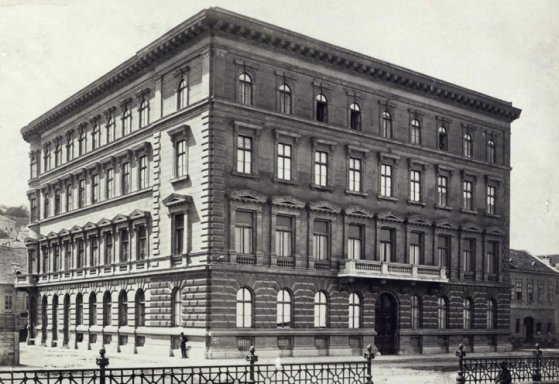 The „intertwined history” of the bridges and the city of Budapest
Which ideas and events have shaped the fate of bridges of Budapest and the cityscape? Alongside many other interesting facts, this question is also answered this newly published book by the Budapest City Archives, which introduces the history of bridges in Budapest.
The „intertwined history” of the bridges and the city of Budapest
Which ideas and events have shaped the fate of bridges of Budapest and the cityscape? Alongside many other interesting facts, this question is also answered this newly published book by the Budapest City Archives, which introduces the history of bridges in Budapest.
Architecture
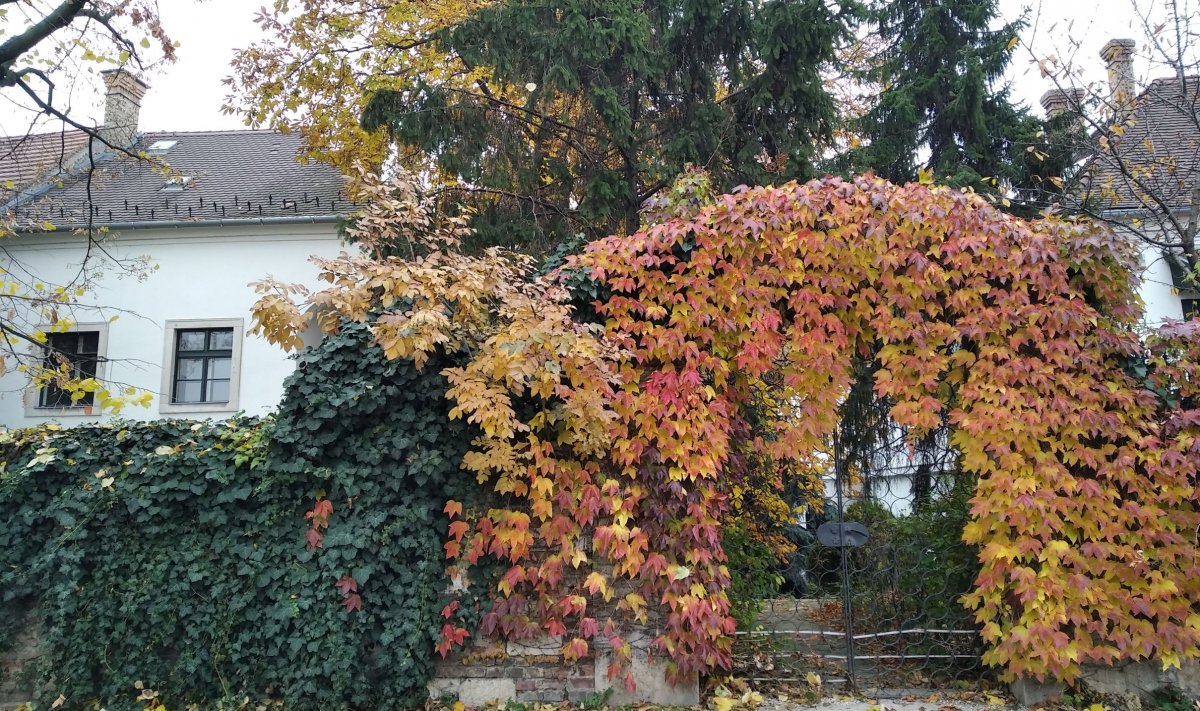 A hidden little street in the Castle - the Babits Mihály Promenade is 85 years old
A hidden little street in the Castle - the Babits Mihály Promenade is 85 years old
November 17, 2021 at 4:30 PM
Babits Mihály Promenade is one of the most romantic streets in Budapest. It runs along the castle wall of Buda, and although the tourist traffic is huge nearby, only a few are walking in this relatively hidden area. Yet it was created in the 1930s precisely because it opened up a magical panorama of the entire city, and it was hoped it would attract foreign visitors like sugar.
School with ornamental garden - Renovation of Jedlik Ányos Grammar School begins
November 17, 2021 at 1:30 PM
The main building of the Benedictine grammar school in Csepel will be completely renovated, and a modern central hall, vocational education wings, library, pavilions and an ornamental garden will be built during the investment.
The interiors of the Hungarian National Museum are being renovated
November 14, 2021 at 4:00 PM
Internal renovation work has begun at the Hungarian National Museum, during which the reception areas and the museum shop, as well as a café, will be renovated.
Bosnyák Square is being completely renovated, and a new city center is being built in Zugló
November 12, 2021 at 2:00 PM
A new town hall, a market and a specialist clinic will be built on Zugló's main square, and a new town district with parks, a shopping street and public spaces will be established between Bosnyák Square and the Rákos stream. The multifunctional district center is scheduled for completion in 2024.
We have the designer of the new campus of the Péter Pázmány Catholic University - Here are the visual plans
November 11, 2021 at 2:30 PM
The results of the design competition were announced, which were won by Közti Zrt. And Hamburg C Kft. Thus, according to his ideas, the new building complex of the Pázmány Péter Catholic University can be built behind the National Museum in the spring of 2026, in the area bordered by Pollack Mihály Square, Szentkirályi Street, Múzeum Street and Bródy Sándor Street, in the 8th district.
A design tender is being announced for the renewal of the Town Hall Park
November 8, 2021 at 4:00 PM
According to the plans, the area currently used for parking will be transformed into a park and opened to the people of Budapest. The renovation of the Town Hall Park may start in 2023, but it is also planned to renovate the rear facade of the Town Hall facing Károly Boulevard.
The wedge of Szabadság Square is renewed - The Hungarian National Bank regains its original splendour
November 8, 2021 at 9:00 AM
The Hungarian National Bank was established in 1924, and the institution's well-known building in Szabadság Square was actually handed over in 1905 as the headquarters of the Austro-Hungarian Bank in Budapest. The economic flourishing of the period of dualism is also reflected in the prestigious building designed by Ignác Alpár, which will hopefully be brought to the fore by the reconstruction that will begin soon. During the renovation of the monument, the original conditions will be restored in the interior and the whole building will be modernised and made energy-efficient.
The Lutheran Church in Kőbánya is ninety years old, the first Protestant building in Budapest showing modern architectural principles
November 5, 2021 at 11:00 AM
The church of the Lutheran Parish of Kőbánya, consecrated in 1931, is located in the geometric center of the capital. The building at 14 Kápolna Street is a small "jewel box" of Hungarian sacred architecture between the two world wars. Its floor plan evokes the world of Baroque sacral buildings with a single nave, and in its external design it can be related to the Western European buildings of art deco.
The interior of the Hunyadi Square Market Hall will be renovated
October 29, 2021 at 7:30 PM
According to the public procurement, the designer should take into account that the market hall, built in 1897 according to the plans of Győző Czigler, is a protected monument building in a world heritage area.
Renovation of the headquarters of the Magyar Nemzeti Bank begins
October 27, 2021 at 6:30 PM
The complete reconstruction of the headquarters of the Magyar Nemzeti Bank in Szabadság Square will start in November. During the works, the damage to architecture and the fine arts caused by post-World War II alterations, thus restoring the original splendor of the building. The end of the renovation is planned for 2024, the 100th anniversary of the founding of the independent Hungarian central bank.
A call has been issued for the renovation of the former station building in Kelenföld
October 27, 2021 at 2:00 PM
The tender for the renovation of the station building of the Kelenföld railway station has been announced, the construction works may start next year. The Transport Museum will create a railway history exhibition space and field table in the house, but a new community space and a café are also planned.
The lively story of the Pucher House - A newspaper was also founded in the house at 53 Andrássy Avenue
October 27, 2021 at 11:30 AM
111 years ago, the idea of one of the typical societal media of the 20th century, Színházi Élet, was born in one of the 3rd-floor rooms of the house at 53 Andrássy Avenue. There were many shops and offices in the building, but nowadays the roof of the building is also interesting. A lot has happened in the last 135 years with the roof of the residential house on the corner of Andrássy Avenue and Eötvös Street - the most recently completed attic installation got an occupancy permit.
The Eiffel Workshop has been opened
October 26, 2021 at 3:00 PM
The Eiffel Workshop of the Hungarian State Opera House was officially handed over, and a total of 33,000 square meters and a 3-hectare park of the institution were renewed. The new cultural center opens up a great opportunity for opera performance.
The restored Franciscan church, parish and community house in Pasarét were inaugurated
October 25, 2021 at 3:00 PM
The Franciscans of Pasarét renovated the monastery and church in the Parish of St. Anthony of Padua and created a new, modern community parish building. The church of Pasarét, designed by Gyula Rimanóczy Sr., was consecrated in 1934 and most recently underwent major reconstruction in the 1980s.
The pentagon of the Buda bank of the Danube - Pestbuda visited the completely renovated church of Szilágyi Dezső Square
October 21, 2021 at 10:30 AM
The Szilágyi Dezső Square Reformed Church was taken over by the faithful on Palm Sunday of 1896, so this year it celebrated the 125th anniversary of its construction. The Parish kept track of the anniversary and two years ago began the interior renovation of the building, which was largely completed in March. Due to the month of architecture - and as the Reformation Day approaches - Pestbuda was able to see what the new interior became like.
A worthy plot of land for the Palace of Justice has been found opposite the Parliament - The building of the Curia is 125 years old
October 20, 2021 at 9:00 AM
Recently, the name of Alajos Hauszmann has been in the public consciousness, mainly as an architect of the Royal Palace, due to the constructions in the castle, but many other works are also connected to his name in Budapest. One of his most notable and most successful works is the building of the Curia in the Kossuth Square, which was handed over just 125 years ago, on 20 October 1896, in a ceremonial setting, as part of the millennium celebrations.
Once upon a time there was a boy's orphanage - Josephinum designed by Mihály Pollack got its name from Palatine Joseph¬
October 10, 2021 at 10:00 AM
The support and upbringing of young children who lost their parents, and the satisfaction of their daily needs in Hungary until the middle of the 18th century was undertaken by the churches. The first city orphanage opened in Kőszeg in 1741, and then in the following decades similar institutions maintained and operated by the settlements were built in Selmecbánya [today Banská Štiavnica], Sopron, Nagyszombat [today Trnava] and Veszprém. In Pest, although prominent citizens donated significant sums for this purpose in the 1790s, only 100 years after the opening of the one in Kőszeg was the foundation stone of the first educational institution of this type laid, and it named after Palatine Joseph.
One of the largest churches in Budapest was consecrated ninety years ago
October 8, 2021 at 9:00 AM
The Church of Our Lady of Hungary in Rezső Square, consecrated on 8 October 1931, became the second largest church in the capital after St. Stephen's Basilica. Although it has since been toppled from this eminent place, it is still at the forefront to this day. However, not only is its size commanding authority, but also the long and tacit history of its construction.
The National Theatre operated in Hevesi Sándor Square for 34 years
October 1, 2021 at 12:30 PM
When the old building of the National Theatre on Blaha Lujza Square was blown up on 15 March 1965, no one would have thought the institution would operate in a temporary location for three and a half decades. The National Theatre held its opening performance on 1 October 1966, in the building of the former Hungarian Theatre on Hevesi Sándor Square, and until 2000, it was the home of the company.
Reconstruction of the Honvéd High Command building in Buda Castle begins
September 30, 2021 at 4:00 PM
The torso of the Honvéd High Command, originally designed by Mór Kallina, located on Dísz Square, will regain its original form during the reconstruction, and its useful area will more than triple. In the future, it will function as a visitor center, the cultural and tourist gateway of the Buda Castle district.
The investment in the new Transport Museum will be accelerated - Preparatory work may begin next year
September 29, 2021 at 2:00 PM
From 2022, the Northern Vehicle Repair will officially become the home of the Hungarian Museum of Technology and Transport. They are bringing forward the necessary demolition, environmental remediation of contaminated soil and reconstruction of some smaller buildings. Reconstruction of the Diesel Hall into a museum could begin in 2023.
Modern, yet traditionally Hungarian - the Church of St. Michael in Albertfalva is 80 years old
September 29, 2021 at 10:00 AM
September 29 is the feast of St. Michael the Archangel, the most popular, most often depicted angel. He was elected patron of several churches in Budapest, the youngest of which was the parish church of Albertfalva, consecrated in 1941. The modern, yet traditionally Hungarian building has recently been expanded with a new community house.
Simon Tolnai, the Hungarian press magnate built a press empire from scratch in Dohány Street
September 28, 2021 at 9:30 AM
Pestbuda rarely reveals behind-the-scenes secrets of their editorial staff, now they make an exception: when researching the past of Budapest, journalists often look for information or photos in the Tolnai Világlapja newspaper. The first issue of the newspaper was published 120 years ago, on 28 September 1901. Its founder, Simon Tolnai, built his huge press empire from scratch, centred first in the demolished Orczy House on Károly Boulevard and then in Dohány Street. The latter still stands today, operating as an office building.
Makovecz started it, his pupil finished it: The church of Pesterzsébet was inaugurated
September 27, 2021 at 4:00 PM
The Reformed Church of Togetherness in Pesterzsébet-Szabótelep was consecrated, the foundation stone of which was laid on September 23, 2018, and construction began in 2019. A 20th district building is the first church in Budapest, which is based on the ideas of Imre Makovecz. the details of the plans were worked out by Tamás Dósa-Papp, the student of the world-famous architect. The church also has a congregation house and a parish.
Wekerletelep in Kispest also preserves the memory of the prime minister who passed away a hundred years ago
September 26, 2021 at 9:30 AM
Wekerletelep with its special atmosphere is located in Kispest. Its smaller and larger houses form this fairytale-looking part of the city in a uniform style, arranged in streets that are inexplicable for an outsider, but are in a regular order. Its creation was initiated by Sándor Wekerle, one of the most prominent Hungarian prime ministers, who passed away a hundred years ago.
The foundation of the Archduke's Palace in Buda Castle is already under construction
September 24, 2021 at 4:00 PM
Work on the foundations of the former palace of Archduke Joseph began in Buda Castle, Szent György Square. The building will be rebuilt according to the original plans under the National Hauszmann Program.
Stations of a Life - The memory of István Széchenyi, born 230 years ago, in the square named after him
September 21, 2021 at 9:00 AM
The year 2021 can also be called the Széchenyi Year, as Hungarians celebrate the 230th anniversary of the count's birth on 21 September. In addition, there is a square in Pest that had been named after the biggest Hungarian for 10 years, and most of its corners are related to a certain stage of the count's life or patriotic deeds. It is the square at the Pest end of the Chain Bridge, which István Széchenyi may have known as Kirakodó Square.
The new Hungexpo lures everyone in
September 20, 2021 at 7:30 PM
One of the largest and most modern congress and conference centres in Central Europe has been established in Budapest, on the territory of Hungexpo. The existing buildings have been renovated and completely new ones have been built, which impress the visitors not only with their equipment but also with their appearance.
World-famous architects in Budapest
September 19, 2021 at 9:30 AM
In 1930, Budapest hosted the 12th International Congress of Architects, which was attended by architects from all over the world. As an accompanying event to the triennial event, a large-scale architectural design exhibition was held in Budapest, which was open to the public between the 6th and 16th of September 1930.
The other Andrássy Palace - After the war, the Bem quay building was demolished
September 17, 2021 at 11:00 AM
The son of Prime Minister Gyula Andrássy once lived with his family in the three-storey palace on the banks of the Danube. in which we can see today the modern building of the French Institute. The elegant Neo-Renaissance building on the Bem Quay was demolished after World War II and was replaced by an empty plot for decades.
More articles
 The „intertwined history” of the bridges and the city of Budapest
Which ideas and events have shaped the fate of bridges of Budapest and the cityscape? Alongside many other interesting facts, this question is also answered this newly published book by the Budapest City Archives, which introduces the history of bridges in Budapest.
The „intertwined history” of the bridges and the city of Budapest
Which ideas and events have shaped the fate of bridges of Budapest and the cityscape? Alongside many other interesting facts, this question is also answered this newly published book by the Budapest City Archives, which introduces the history of bridges in Budapest.
 The Bridge Report, which brought a turning point in the history of Budapest
A travel report that changed the history of Pest and Buda, as well as Hungary. The little book contributed to the change of half a thousand years of legal customs and the implementation of an investment of unprecedented size and technical quality. This book was The Bridge Report [Hídjelentés in Hungarian].
The Bridge Report, which brought a turning point in the history of Budapest
A travel report that changed the history of Pest and Buda, as well as Hungary. The little book contributed to the change of half a thousand years of legal customs and the implementation of an investment of unprecedented size and technical quality. This book was The Bridge Report [Hídjelentés in Hungarian].
 Drama on the university wall - The heroic monument was planned 95 years ago
In the constant hustle and bustle of the Egyetem Square in Pest, the students may not even notice the monument that decorates the short section of wall between the church and the central building of ELTE. However, it commemorates their predecessors, the heroes who fought for their country in World War I, and those who heroically helped them. The first design of the dramatically collapsing soldier was born in 1928, ninety-five years ago.
Drama on the university wall - The heroic monument was planned 95 years ago
In the constant hustle and bustle of the Egyetem Square in Pest, the students may not even notice the monument that decorates the short section of wall between the church and the central building of ELTE. However, it commemorates their predecessors, the heroes who fought for their country in World War I, and those who heroically helped them. The first design of the dramatically collapsing soldier was born in 1928, ninety-five years ago.

